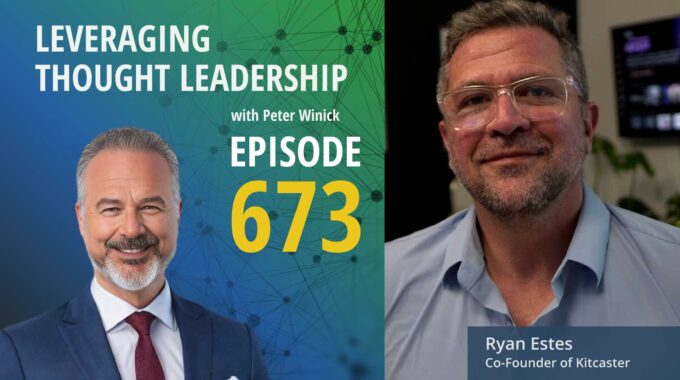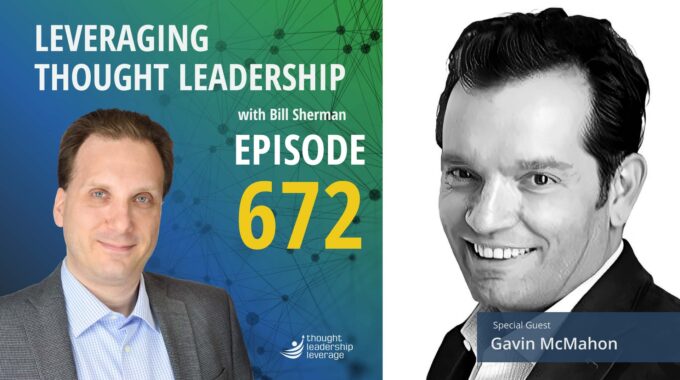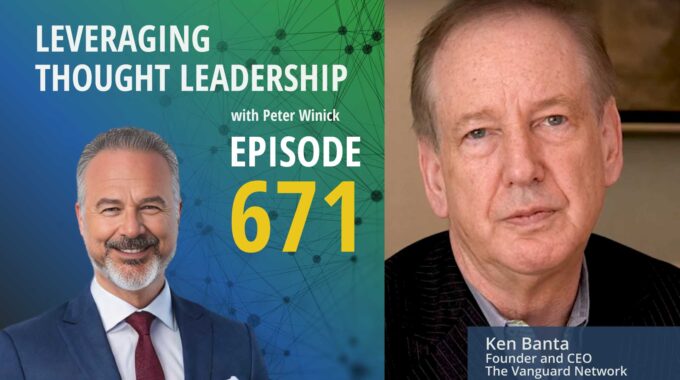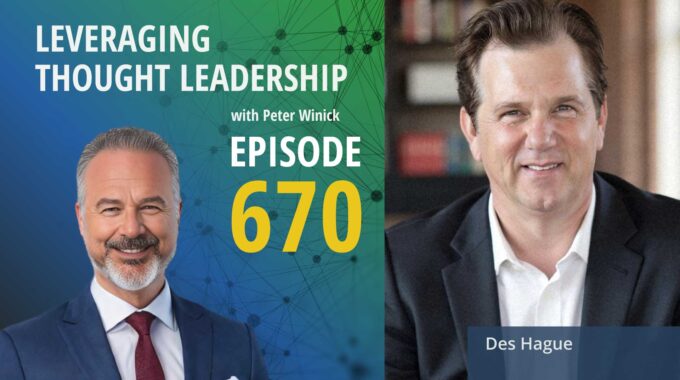Founder-led marketing, podcast strategy, and the art of authentic conversation What makes a podcast truly…
Straddling the Worlds of Front and Back of House | Curtis Bateman
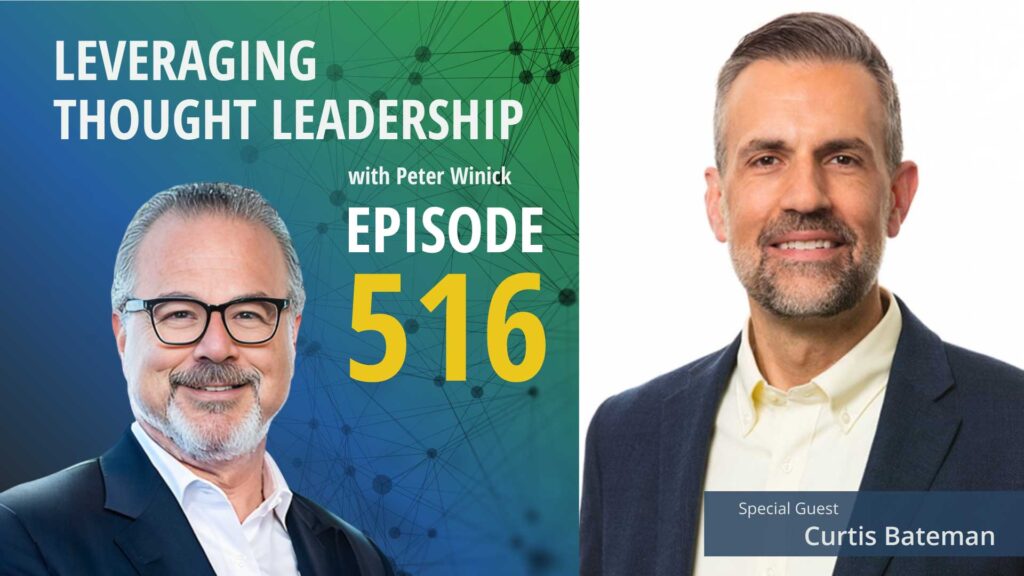
What it takes to find success on both sides of an organization.
An interview with Curtis Bateman about practicing what you preach and setting yourself up for a successful exit.
There are few thought leaders who work behind the scenes to create, develop, and deploy programs while simultaneously being the face of the brand.
What does it take to find success on both ends?
Today we’ve invited internationally recognized presenter, content developer, business leader and coach Curtis Bateman! He is currently the Vice President of International Direct Offices at FranklinCovey, and was previously the President and CEO of Red Tree Leadership before orchestrated a buyout to FranklinCovey.
With few thought leaders working both the back and front of the house, Curtis gives us some insights into what it takes to be successful doing both. He tells us about the passion and extra hours that are required to practice what you preach. However creating doesn’t have to be a solo job, in fact, Curtis shares how having Brain Buddies can help sharpen your skills. Having a knowledgeable team around you to help research stories and ideas as well as draft or polish content creates a high quality end product.
Curtis tells us how being in the market place every day while creating content creates a constant cycle of feedback as content goes out to the audience, gets live reactions, and can be revised based on that input. This system has been used to pressure test everything from their framework to his newest book Change: How to Turn Uncertainty Into Opportunity.
Having had a boutique company that exited to FranklinCovey, Curtis fully understands what it takes to position yourself for acquisition. While each instance is different Curtis shares how having principle-based content that matched up with the prospective buyer, having a Fortune 50 client, and thought leaders with significant industry experience that were capable of making contributions inside the new organization all played a role in a successful acquisition.
Three Key Takeaways:
- Content creation doesn’t have to be a single player game. By working with others you can polish your skills and elevate your content.
- Taking ideas to your audience and revising based on feedback can give you real time advice on where the market agrees or disagrees with your content.
- Exiting a boutique firm for a bigger company means you don’t get to touch every aspect of the business anymore. You have to learn to trust others.
If you need a strategy to bring your thought leadership to market, Thought Leadership Leverage can assist you! Contact us for more information. In addition, we can help you implement marketing, research, and sales. Let us help you so you can devote yourself to what you do best.

Transcript
Peter Winick And welcome, welcome, welcome. This is Peter Winick. I’m the founder and CEO at Thought Leadership Leverage and you’re joining us on the podcast today, which is leveraging thought leadership today. My guest is Curtis Bateman. He is currently Franklin Covey’s VP of International Direct Offices. He’s got over 25 years experience in the training industry. He’s an internationally recognized presenter, content developer, change consultant, business leader and coach. His passion for enabling organizations at change resulted in the co-creation of transformative industry leading solutions, including Change Element leaders and change managing millennials and millennials at work. So before we could talk more about his CV, let’s just talk to Curtis. That would be more fun. So welcome, Curtis. How are you today?
Curtis Bateman I’m doing really well. Peter. It’s nice to be with you.
Peter Winick So I want to take this in a little bit of a different direction for a moment. So you’re one of the few folks from a thought leadership business perspective that have been sort of on both sides of the House, what I call sort of back of the House in front of the house. So Stephen Marr is one of the probably most well known, but it’s an unusual transition, right? Usually. And again, speaking in general terms, people are either back of the house right where they are developing programs, selling programs, marketing programs, delivering programs, etc. or they’re more the face of the brand, the creator of the thought leadership, etc.. Tell me a little bit how you sort of straddle both worlds because it’s a rare thing.
Curtis Bateman Well, first of all, I love straddling both worlds. And I think it’s important because it increases relevance, right? You actually get to practice what you preach and then you get to talk about things that are working. So the way I balance it is I invest a lot of time and passion in it, and I’ve been working on it. All right. There’s no hiding that.
Peter Winick Oh, there’s that. Yeah.
Curtis Bateman It takes a lot of time and effort to do it. You know, developing the training programs, writing the book is easily an extra 20 hours a week, four years on top of doing regular work. And I think that’s important. Right? A lot of.
Peter Winick Young women say, but let’s just stop there for 20 hours a week on top of regular work. And I’m assuming the work isn’t 20 hours. Right.
Curtis Bateman No, no, it’s a lot. It’s a lot of commitment. But I think that’s just the reality of what you’re trying to do, both sides of it, right, to do the backend work and to do thought leadership, to write and to create, you know.
Peter Winick For a minute. Because I think that’s a critical point. Not only is it more work, but it’s different work. Like when you’re in.
Curtis Bateman A different work business.
Peter Winick Mode and you’re writing proposals and serving clients and you know that’s different and you can do things in fits and starts, get a half hour to pick up this. You can’t just schedule, you know, to, to, to 20 on Tuesday come up with breakthrough idea. Right. Like how does it’s a totally different.
Curtis Bateman That’s right in if you will. That’s right And it probably elongates it because I’m doing both in terms of writing. Sure. One of the things I found that really helped is I had a couple of brain buddies or thought partners that that would really help me get into that space, working with coauthors or writers that helped to make sure the writing is of good quality. That helps once you get into that space because you’re asking them to commit time. So it’s 2 hours, 3 hours, 4 hours, or it’s an evening call for several hours, and it allows you to get into that space. But if you try and sneak in, you know, 20 minutes here in 20 minutes, you don’t get very far unless there’s a very specific task you’re trying to accomplish.
Peter Winick And I want to expand on the concept of, you know, brain body’s thought partners, etc.. Most people think that, you know, writing, being a thought leader has to be a solo sport. Right. You know, typical, you know, vision of of an author is, you know, Hemingway sitting there with a, you know, probably a couple of bottles of, you know, scotch or whatever. Pounding away at the keyboard. And there are plenty of people where that’s okay. You know, that’s how they mold their introverts, etc., etc.. But I find more and more that it’s a bit of a you know, everybody’s got their own personal buddy list of brain buddies to do it collaboratively. What is it? Hold you accountable. But it also sharpens your tools. Tell me how that works for you.
Curtis Bateman Yeah. This was a new discovery for me with this, and it was pretty special, actually. So I had my coauthors. But then there was this other team we assembled that I was really clear on. What’s the arc of the book and the message. I’d been doing enough work for 20 years to know what we were trying to convey. But how do you do that in an engaging way and with the stories is where I brought these other people in. So we would be on call and say, we need a story that illustrates this. Well, there’s a couple of researchers that go help find stories like that, or we need a draft of this. And I would spend 20, 30 minutes talking that through. And one of the writers would go write it up and then we would review it and talk about it and debate it amongst the coauthors. And in all candor, we rewrote the book. We wrote it three full times before we felt like it was published worthy because it just required that much effort to really make sure the message was clear, conveyed the experience, and all of those thought partners researchers. I would never want to hide them in the background. They were remarkable and such an important part of the work we did.
Peter Winick So let me flip it, because you’re, again, one of the rare folks that has that business savvy, the business acumen specifically in the thought leadership space. How does that impact what you’re creating as a thought leader And how And what I mean by that is oftentimes and it’s a little bit sad, I see thought leaders come up with some amazing, amazing, beautiful models and great staff, etc., but they’ve never pressure tested it in the marketplace. And it’s really good and it’s really solid. But is it really solving a problem that anyone cares about? And the answer is no. So the great job of solving something that nobody’s really staying up late worrying about, how does how does your sense of, you know, having your nose in the marketplace every day impact what you’re creating and developing as a thought leader?
Curtis Bateman Yeah, You know, early on when I first started on this journey of working on change, I was in my own little boutique shop and we joined, frankly, coming part of the way through. So in my own boutique business and it was created go out and pressure test it talked to a. CEO. So there was this constant cycle of feedback, and it was with large companies, it was with global companies, it was with military nonprofit. It got tested everywhere. And I’ll tell you what, there’s something that really sharpens the mind when you’re building it. And then the next day you’re teaching it and you get feedback. It’s got to work.
Peter Winick And for me it doesn’t or you’ve.
Curtis Bateman Got to change.
Peter Winick Yeah. Then you’ve made, you know, you might have spent a week or two putting together something and you put it out there and it’s, you know, crickets. It doesn’t work, it’s not relevant, whatever. Yeah, I would say, wow, thank God for that. Because if you, if you put in two years worth of work for a book and it landed like a side, you know.
Curtis Bateman That’s right.
Peter Winick That would be far more depressing or less of a good use of resources. So I always think that and I don’t I don’t know everybody thinks this way that, you know, thought leadership is really a series of experiments. And then the market will tell you, particularly social media, whatever, really quickly, hey, that’s a good idea. And hey, hey, Curtis, Not so good.
Curtis Bateman You know? Yeah. So for us, the underlying framework was pressure tested over years. And then the book we pressure tested as well. We the first chapter was a parable. We went out and we had 30 people read the parable and tell us what they liked and didn’t like, and we completely reworked it. And with the rest of the book we had other experts on change, people from the military, people from corporate life read it and tell us what was good and bad when it gets your attention, because they’ll tell you, but that’s good. We want it to work, right? If it doesn’t work, I don’t want to spend a moment on it. So let’s make sure that’s.
Peter Winick That sounds good. But in practice, oftentimes and I understand it when someone tells a thought leader don’t really like that thing you put in front of me, Curtis. It’s hard to separate that from saying, Curtis I don’t think you’re that smart, right? The two different things, right? Like how do you separate the ego from, you know what? That was an idea I had? Maybe it wasn’t. My best idea. Doesn’t resonate. Whatever. Move on to the next one. There’s a better one there because I think, you know, the only way to respond to that is with gratitude to say, okay, yeah, that’s cool. Let me go work on something else that’s going to resonate.
Curtis Bateman Well, you either have to develop that ability to take the input and if it if you can’t get to that point, you probably shouldn’t be doing it because you need feedback for it to be great. And it’s not always easy, right? There were times that people said, This doesn’t work. And I’m thinking, Wait a minute, I’ve used it, it works. And so then the question is, is it how I’m writing about it or is it they don’t agree with the way the idea works, You have to sift through all that and figure it out and then retest. But yeah, you got to put on some thick skin and get ready for the feedback.
Peter Winick Yeah, yeah.
Peter Winick If you’re enjoying this episode of leveraging thought leadership, please make sure to subscribe. If you’d like to help spread the word about our podcast, please leave a five-star review at ratethispodcast.com/ltl and share it with your friends. We’re available on Apple Podcasts and on all major listening apps as well as that thoughtleadershipleverage.com/podcast.
Peter Winick So I want to touch on a little bit with spending on it and talking about sort of creating the thought leadership teams being market savvy, whatever. Flip to the business side. Give me I mean, you’re in a in a really great position in that a you had a boutique firm, you had an exit. You exited to Covey, clearly one of the greatest firms in leadership development probably in our lifetimes. Right. I want to take it from the having your own firm, because there are a lot of boutique consultancies out there that, you know, they’re, you know, based on the IP of one person, two people, etc., what are the things they need to have in place to even be considered as an acquisition target? Because I think people have a not a true sense of what it might look like.
Curtis Bateman Yeah, Yeah, that’s a great question. And there’s there are, there are a lot of answers. Let me tell you my story, which is only one example, because for some it’s like revenues, some it’s client acquisition.
Peter Winick Some yeah it’s.
Curtis Bateman But for us it was three things that showed up as being relevant for COVID to look at us. Number one, we had some content to change content that was principle based, which matched the style of content COVID like, right? It wasn’t just skills training, it was actually foundational. And there was there was a set of principles underlying that are true in every circumstance.
Peter Winick So that universal principles because that I mean, right. That obviously lines up to the company that started seven habits, right?
Curtis Bateman That’s right. That’s right. And so if we didn’t have that, we would have never been a COVID candidate. Right. Okay. A second thing we had was we had a Fortune 50 client that they didn’t have on their list of clients who. Right. Oh, that’s good. And that helped a lot, right? It was helpful to have a 4050 client that they had never really found a foothold in.
Peter Winick But unpack that, because now they’re looking at. Okay, so if Curtis and Co has client X and there’s some changed stuff that they like, wow, we could ten X that client because we’ve got all this other stuff.
Curtis Bateman That’s right.
Peter Winick Because I think that’s important because clients there’s a self-selection with clients. You know, this is sort of a before the algorithm people that like covey like principle-based content, courtesy of content. Therefore, you’ve already got the beachhead there. So, I wouldn’t yeah.
Curtis Bateman It was a big, big idea. And you’re right, you don’t want to overlook that because the value of a client that’s that large and significant, tremendous opportunity.
Peter Winick Yeah.
Curtis Bateman The third thing was there were three of us that had a significant amount of industry experience that they wanted to bring into the business because they saw us as capable of making a contribution inside the organization.
Peter Winick Well, let’s do just a quick to keep people so you’ve got solid IP, you have principles client and then they’re buying talent.
Curtis Bateman Talent.
Peter Winick Right? So it’s an acquisition of talent, right?
Curtis Bateman Yep, that’s right. That’s exactly right. And three of us moved over and it was brilliant, right? That was brilliant for two of us really thrived. One of us didn’t. But that’s, I think, normal in an acquisition. It’s not always 100%.
Peter Winick And stay there for a minute on the on the top. Yeah. There’s often times there’s talent on a timer. Right. You’re going to excite the talent and everybody knows without saying it out loud, you know, maybe, okay, this will be 24 months to do the transition, whatever. But it depends on where that talent is. That’s how it might like be someone that’s just designed to be more of a solo. They might be later in their career. And this is the sunset. Or in your case, I would say. I don’t know if I would say it’s unusual, but it may not be typical that you’re making a transition from an entrepreneur to an employee that is entrepreneurial, which is different.
Curtis Bateman That’s right. And in a publicly traded company, which was a big shift, I said to my wife, I said, we’re going to try it for two years because I came out of VC backed piggyback. Yeah, really entrepreneurial. And I thought, Can I do this? And I’ve had to be really clear to define what success looks like because it’s very, very different inside a large public company. So, yeah, absolutely. That is an interesting and you’re exactly right, one was way too entrepreneurial and transitioned out quickly. The other really had a really nice run as a leader for about eight years. And then I’m still here, right? So and I think that’s normal with talent acquisition, which is why the other pieces had to be in place. Peter To make it viable long term. But that’s where we land. It’s been great.
Peter Winick That’s great. And, you know, I think the other thing is when you are, you know, an entrepreneur, smaller business, etc., the resources, the reach, the breath that a larger organization brings to you is kind of mind blowing, right? Like in terms of how there’s people that just do X social meet. You know, there’s so many things that you have to do and by definition, at best, you’re going to do them at a mediocre level because you’re probably not a social media guru or whatever. That’s right. Yeah. How did how did you not adjustment?
Curtis Bateman Well, it was needed. Part of my issue was I saw the potential for our content and knew that it was relevant. We had done work all over the world with our content in our boutique from so we knew it played well, it worked, it made a difference and we needed a louder microphone to get to the world at large, and we really believed our content could make a difference. So it seemed like a natural progression for us to get it on to a bigger stage. And so I welcomed it. I thought it was I thought it was exciting to have all this other expertise that the company could bring. What you give up, though, if you’re an entrepreneur thinking about this, you give up being involved in everything. Yeah, you don’t get to touch everything. So that means you’re trusting others and it doesn’t always come out the way you would say it, and you have to be okay as long as it’s not incorrect with others doing it and saying it in their way. And that’s where that specialization starts to give you some leverage or amplification.
Peter Winick Yeah, Yeah, I think that’s right. The last thing I want to comment on and we didn’t even touch on it, but I think it’s important is that your IP was not only principle based, but it’s method and framework based. And what I would say not and I don’t mean this in the wrong way, personality based. And what I mean by that is lots of thought leaders, it’s really selling charisma or energy or wow, that person’s off the charts and it’s not replicable. And when you have models, methods, frameworks, systems, etc. that are baked into your intellectual property, not that curse becomes irrelevant. But you’re not the only you’re the creator of it. There’s something extra special when I get to experience you delivering it. That’s right. It is replicable. And I think that’s the key piece because a covey or any other organization doing an acquisition is not looking to acquire a personality. They’re looking to acquire scalable solutions to embed into their organizations, their clients.
Curtis Bateman It’s a great insight and not everybody wants that right. Some people want that brand built around themself. For me, yeah, it came back to personal mission around helping every individual that the content or that I touch to be better off, to be more capable. And it was less about me and more about delivering on, you know, my end in mind or my mission to help other people. And it’s thrilling to watch somebody else that I’ve never met, but that’s been trained to stand up and use the content. They think, you know what, they’re 90% on point and it’s making a difference for others.
Peter Winick Which is pretty cool, right? When you’re seeing someone that you didn’t meet, you didn’t personally train, you didn’t personally mentor, deliver the stuff that you created, and you’re like, that’s pretty good.
Curtis Bateman I love it. I think that makes me as excited as anything else, right? I saw a social media post for somebody in like Columbia and I saw them teaching and I’m like, That’s it, You got it. And it’s just so fun to see.
Peter Winick Very cool. Well, this has been great. I appreciate your time and sharing your story and lots of insights that I think are important relative to two things that people should be thinking about when they’re either putting thought leadership out there and thinking about growing and scaling and potentially an exit down the road because the important things to think about. Appreciate your time, Colonel. Thanks much today.
Curtis Bateman You bet. Nice to talk with you. Thanks.
Peter Winick To learn more about thought leadership leverage, please visit our Web site at fault leadership leverage dot com to reach me directly below. Email me at Peter at thoughtleadershipleverage.com and please subscribe to leveraging thought leadership on iTunes or your favorite podcast app to get your weekly episode automatically.


